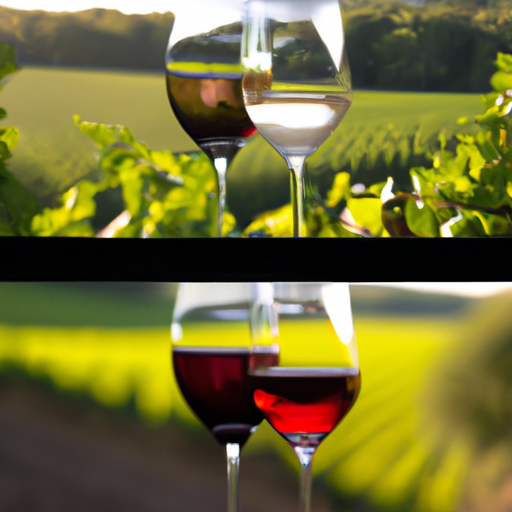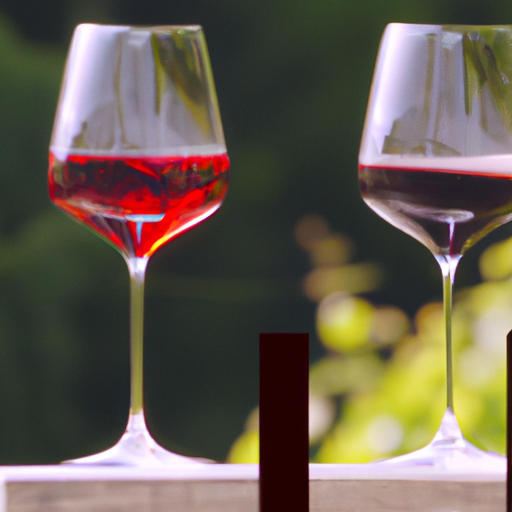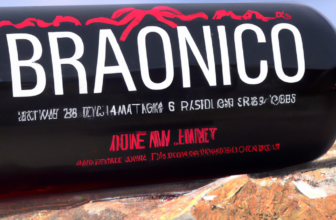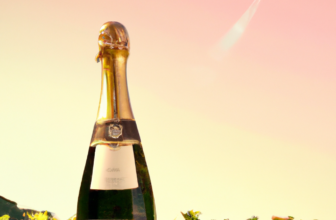
The History and Terroir of White Burgundy and Bordeaux
White Burgundy and Bordeaux are two of the most renowned wine regions in France, each with its own unique history and terroir. Understanding the origins and characteristics of these regions is essential for any wine enthusiast looking to appreciate the distinct flavors and qualities of their wines.
White Burgundy, also known as Bourgogne Blanc, is produced in the Burgundy region of eastern France. The history of winemaking in this region dates back to the Roman era, making it one of the oldest wine-producing regions in the world. The terroir of White Burgundy is characterized by its limestone-rich soils, which contribute to the wine’s minerality and acidity. The region’s cool climate, influenced by the nearby mountains, allows for slow ripening of the grapes, resulting in wines with exceptional finesse and complexity.
Bordeaux, on the other hand, is located in southwestern France and has a winemaking history that can be traced back to the Roman times as well. The region is known for its red wines, but it also produces some exceptional white wines. The terroir of Bordeaux is diverse, with a combination of gravel, clay, and limestone soils. The region’s proximity to the Atlantic Ocean and the Gironde estuary creates a maritime climate, which is ideal for grape cultivation. The wines of Bordeaux are often characterized by their structure, elegance, and aging potential.
While both White Burgundy and Bordeaux have rich winemaking histories, they differ in terms of grape varieties. White Burgundy is primarily made from Chardonnay grapes, which thrive in the region’s limestone soils. The Chardonnay grapes in White Burgundy produce wines that are known for their crisp acidity, delicate fruit flavors, and subtle oak influence. In contrast, Bordeaux white wines are typically blends of Sauvignon Blanc, Semillon, and Muscadelle grapes. These blends result in wines that are aromatic, with flavors ranging from citrus and tropical fruits to honey and floral notes.
Another significant difference between White Burgundy and Bordeaux is their winemaking techniques. In White Burgundy, the emphasis is on minimal intervention, allowing the terroir to shine through. The wines are often fermented and aged in oak barrels, which adds complexity and texture to the final product. In Bordeaux, winemakers use a combination of stainless steel tanks and oak barrels for fermentation and aging. This approach allows for the preservation of the wine’s freshness and fruitiness while adding subtle oak flavors.
In conclusion, White Burgundy and Bordeaux are two distinct wine regions in France, each with its own rich history and unique terroir. White Burgundy is known for its limestone soils, cool climate, and Chardonnay grape variety, resulting in wines with finesse and complexity. Bordeaux, on the other hand, has a diverse terroir, a maritime climate, and produces white wines that are blends of Sauvignon Blanc, Semillon, and Muscadelle grapes. Understanding the history and terroir of these regions is crucial for appreciating the exceptional wines they produce. Whether you prefer the crisp acidity and delicate fruit flavors of White Burgundy or the aromatic complexity of Bordeaux whites, both regions offer a world of flavors waiting to be explored.
A Taste Comparison: White Burgundy vs Bordeaux Whites

White Burgundy and Bordeaux are two of the most renowned wine regions in France, each producing exceptional white wines. While both regions have their own unique characteristics, comparing the two can be an interesting exercise for wine enthusiasts. In this article, we will delve into the taste comparison of White Burgundy and Bordeaux whites, exploring their differences and similarities.
White Burgundy, also known as Bourgogne Blanc, hails from the Burgundy region in eastern France. It is primarily made from Chardonnay grapes, which thrive in the region’s limestone-rich soils. The wines are known for their elegance, complexity, and ability to age gracefully. White Burgundy often exhibits flavors of green apple, citrus, and mineral notes, with a distinct buttery texture. The wines are typically unoaked or lightly oaked, allowing the pure expression of the Chardonnay grape to shine through.
On the other hand, Bordeaux whites come from the Bordeaux region in southwestern France. Unlike White Burgundy, Bordeaux whites are typically blends of several grape varieties, including Sauvignon Blanc, Sémillon, and Muscadelle. These blends create wines with a unique flavor profile, often characterized by vibrant acidity, tropical fruit flavors, and a touch of honeyed sweetness. Bordeaux whites are often aged in oak barrels, which adds complexity and richness to the wines.
When it comes to taste, White Burgundy and Bordeaux whites offer distinct experiences. White Burgundy tends to have a more restrained and subtle flavor profile, with a focus on purity and finesse. The wines are often described as having a crisp acidity, balanced by a creamy texture and a long, lingering finish. Bordeaux whites, on the other hand, are known for their vibrant and aromatic qualities. They often exhibit intense fruit flavors, such as grapefruit, melon, and passionfruit, with a zesty acidity that adds freshness to the wines.
In terms of food pairing, both White Burgundy and Bordeaux whites are versatile options. White Burgundy’s elegance and complexity make it a perfect match for seafood dishes, such as grilled fish or lobster. Its acidity and mineral notes also complement creamy cheeses, such as Brie or Camembert. Bordeaux whites, with their vibrant acidity and tropical fruit flavors, pair well with a variety of dishes. They are particularly well-suited to shellfish, sushi, and spicy Asian cuisine.
While White Burgundy and Bordeaux whites have their own distinct characteristics, they also share some similarities. Both regions prioritize quality and craftsmanship, resulting in wines that are highly regarded worldwide. Additionally, both styles of white wine have the potential to age gracefully, developing more complexity and depth over time.
In conclusion, comparing White Burgundy and Bordeaux whites is a fascinating exploration of two exceptional wine regions in France. White Burgundy offers elegance, complexity, and a focus on purity, while Bordeaux whites showcase vibrant acidity and intense fruit flavors. Both styles of white wine have their own unique qualities and can be enjoyed with a variety of dishes. Whether you prefer the subtle nuances of White Burgundy or the vibrant aromatics of Bordeaux whites, both options are sure to delight the palate of any wine lover.
Exploring the Aging Potential: White Burgundy vs Bordeaux Whites
White Burgundy and Bordeaux are two of the most renowned wine regions in France, each producing exceptional wines with distinct characteristics. While both regions are known for their red wines, they also produce white wines that are highly regarded in the wine world. In this article, we will explore the aging potential of white wines from Burgundy and Bordeaux, and compare the two to see which region comes out on top.
White Burgundy, also known as Bourgogne Blanc, is made from Chardonnay grapes grown in the Burgundy region of eastern France. These wines are known for their elegance, complexity, and ability to age gracefully. White Burgundy wines often exhibit flavors of citrus, apple, and pear, with a mineral undertone that adds depth and complexity. The aging potential of White Burgundy is exceptional, with some wines reaching their peak after 10 to 15 years of cellaring. The acidity and structure of these wines allow them to develop beautifully over time, with flavors becoming more nuanced and integrated.
On the other hand, Bordeaux whites are made from a blend of Sauvignon Blanc, Sémillon, and Muscadelle grapes. These wines are known for their freshness, vibrancy, and ability to pair well with a variety of foods. Bordeaux whites often display flavors of tropical fruits, citrus, and honey, with a crisp acidity that adds brightness to the wine. While Bordeaux whites can also age well, they typically reach their peak after 5 to 10 years of cellaring. The aging process allows the flavors to mellow and become more harmonious, resulting in a wine that is well-balanced and complex.
When comparing the aging potential of White Burgundy and Bordeaux whites, it is important to consider the different grape varieties used in each region. Chardonnay, the primary grape in White Burgundy, is known for its ability to age gracefully. The grape’s natural acidity and structure allow it to develop complex flavors and aromas over time. In contrast, the blend of grapes used in Bordeaux whites provides a different aging profile. While these wines can also age well, they tend to reach their peak earlier due to the higher proportion of Sauvignon Blanc, which is known for its vibrant and youthful character.
Another factor to consider when comparing the aging potential of these wines is the winemaking techniques employed in each region. White Burgundy wines are often aged in oak barrels, which adds richness and complexity to the wine. The oak aging process allows the wine to develop flavors of vanilla, toast, and spice, which complement the fruit flavors of the Chardonnay grape. Bordeaux whites, on the other hand, are typically aged in stainless steel or concrete tanks, which preserve the freshness and vibrancy of the wine. This aging method allows the fruit flavors to shine, resulting in a wine that is crisp and lively.
In conclusion, both White Burgundy and Bordeaux whites have exceptional aging potential, but they offer different experiences for wine enthusiasts. White Burgundy wines are known for their elegance, complexity, and ability to age gracefully over a longer period of time. Bordeaux whites, on the other hand, are characterized by their freshness, vibrancy, and ability to pair well with food. Ultimately, the choice between the two will depend on personal preference and the desired aging profile. Whether you prefer the nuanced flavors of a well-aged White Burgundy or the vibrant character of a youthful Bordeaux white, both regions offer exceptional wines that are sure to delight.






